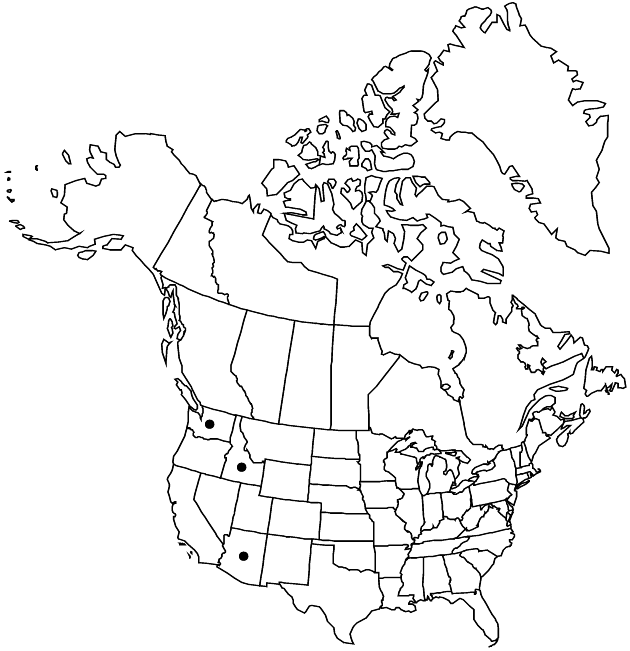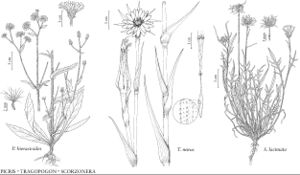Tragopogon mirus
Amer. J. Bot. 37: 497. 1950.
Plants (40–)60–150+ cm. Leaves: apices straight (not recurved or coiled), faces initially floccose to tomentulose, soon glabrescent. Peduncles distally inflated. Involucres conic in bud. Outer florets usually shorter than phyllaries; corollas each proximally yellow and distally purple or brownish purple (giving each head a yellow “eye”). 2n = 24.
Phenology: Flowering early summer.
Habitat: Disturbed sites
Elevation: 700–800 m
Distribution

Ariz., Idaho, Wash.
Discussion
Tragopogon mirus is allotetraploid, formed from T. dubius and T. porrifolius. It originated (probably repeatedly) in the United States (eastern Washington, adjacent Idaho, and near Flagstaff, Arizona). F1 hybrids between T. dubius and T. porrifolius resemble T. mirus but are less robust, have low pollen stainability, and set few, if any, seeds. Tragopogon mirus does not occur in Europe, but T. dubius and T. porrifolius may occasionally hybridize there when sympatric.
Selected References
None.
